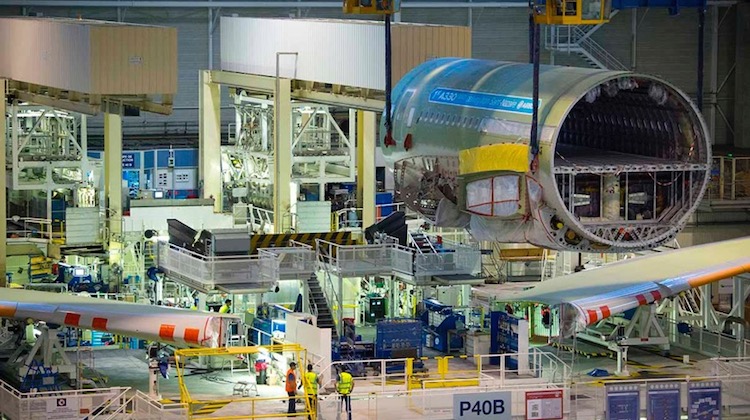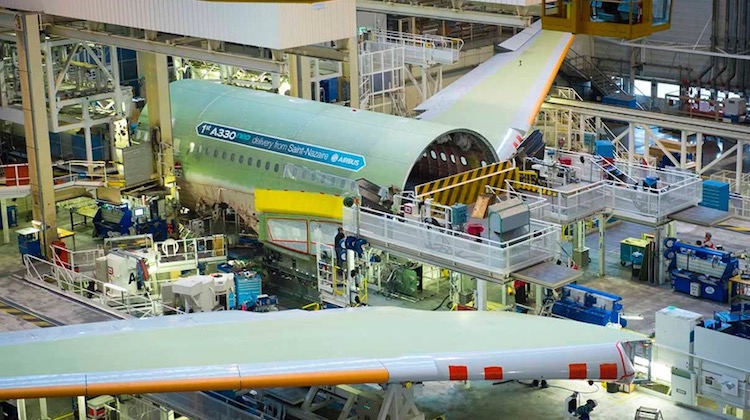
Airbus says the development of its A330neo (new engine option) is progressing on track as the first aircraft enters final assembly.
The first A330neo, an A330-900, had its wings joined to the centre fuselage at the Airbus final assembly line in Toulouse in late September, Airbus said in a statement.
“We have started with a very tight development schedule and are today right on time,” Airbus Head of the A330neo program Odile Jubécourt said.
“I am happy to say we are in good shape to meet the high standards of maturity and reliability our customers expect from us and I want to thank the teams for this outstanding achievement.”
Launched at the Farnborough Airshow in 2014, the A330neo features new Rolls-Royce Trent 7000 engines and a larger wing with “Sharklet” wingtips to reduce fuel consumption. The type is also the launch aircraft for Airbus’s “AirSpace by Airbus” cabin concept.
The A330neo features two variants – the A330-800 is the replacement for the A330-200 currently flown by Fiji Airways, Qantas and Virgin Australia, among others, in this part of the world, while the A330-900 is the replacement for the larger A330-300.
Qantas and Fiji Airways also operate the larger A330-300.
There is 95 per cent commonality between the A330neo and current A330 variants.
The A330-200 had a typical range of 7,250nm when configured with 247 passengers, Airbus said on its website, while the A330-800 would have a range of 7,500nm.
Meanwhile, the A330-300’s range was 6,350nm with a 277-passenger configuration, compared with 6,550nm for the A330-900.
Airbus said there were 186 orders for A330neo aircraft from 10 customers, including Delta Air Lines, Garuda, Hawaiian Airlines and AirAsia X.
The company was targeting certification of the A330-900 in late 2017, with certification for the A330-800 to folllow a year later.
TAP Portugal is the launch customer of the A330neo, with 14 A330-900s on order.












